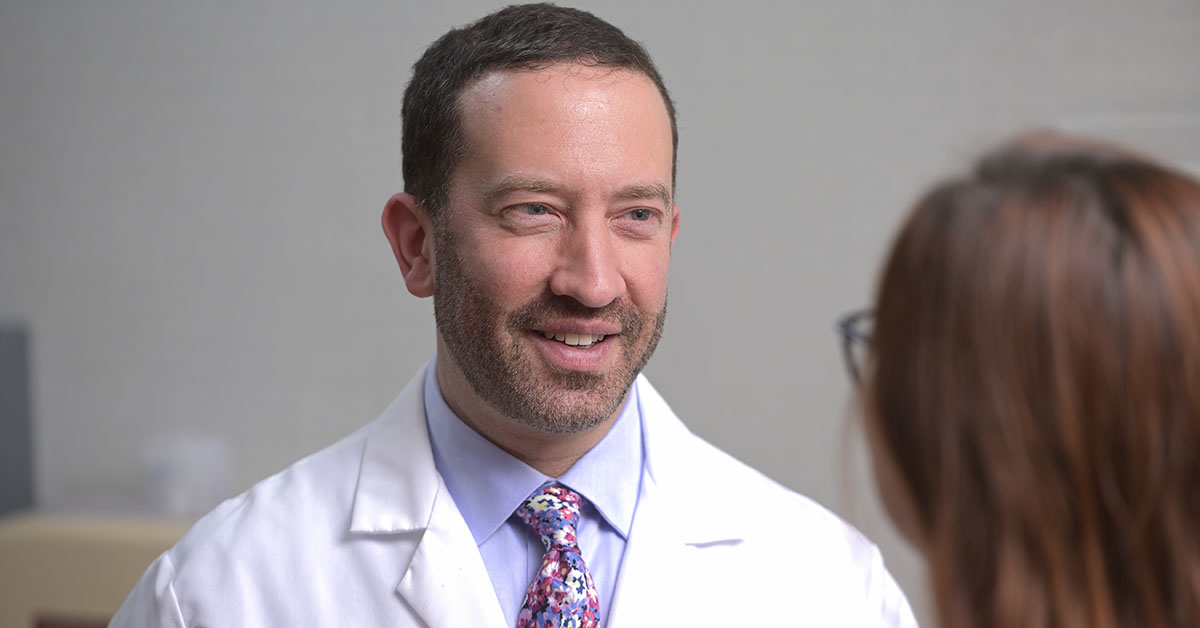
PHILADELPHIA (June 18, 2021)—A study from researchers at Fox Chase Cancer Center suggests that some breast cancer patients may be able to forgo certain testing procedures after neoadjuvant chemotherapy, which is chemotherapy given before other treatment, without increasing their risk of cancer returning.
Prior studies on detecting whether breast cancer has spread to lymph nodes after neoadjuvant chemotherapy have focused on minimizing false negative rates, where a test comes back negative for cancer but cancer is in fact present. However, with all of the treatments that breast cancer patients are given, false negative rates for this component of breast cancer testing are only important insomuch as they affect patient outcomes, namely recurrence and survival rates, which those trials did not evaluate.
“The trials gave us excellent information on false negative rates, but this study has now suggested that we need to take it a step further and go beyond that to look at the actual patient outcomes, because we may actually be able to do these procedures on patients in a less invasive way and still give them as good an outcome,” said Richard J. Bleicher, MD, FACS, a professor in the Department of Surgical Oncology at Fox Chase. Bleicher, who was the senior author on the study, is also the leader of the Breast Cancer Program.
The results from the trials showed that the best way to avoid a false negative test result was by using sentinel node biopsy with two tracers. This means injecting the patient with both a blue dye and a radioactive compound near their tumor site in order to see what lymph nodes both substrates spread to—the “sentinel nodes”—and biopsying those nodes.
The trials also showed that removal of three negative sentinel nodes was also helpful to make a confident negative (no cancer) evaluation. If the substrates didn’t reach three nodes, however, which is not something doctors or patients can control, all of the nodes would then be removed to be evaluated, increasing the patient’s lifelong risk of lymphedema.
There is one key issue in all of this, Bleicher said. “The false negative rate sounds important, but ultimately what’s important to doctors and patients is their risk of cancer recurrence and survival.”
In their study, Bleicher and his coauthors looked at recurrence rates from historical patient data and methods that were standard prior to the clinical trial results. At that time, there was no recommendation as to the numbers of nodes and numbers of substrates thought to minimize false negative rates. So Fox Chase did sentinel node biopsies like most institutions at that time, using the information when one substrate was used and even when only one or two nodes took up the tracer, in order to inform further treatment decisions.
If the nodes were negative, that result was assumed to reflect the state of the lymph nodes and all remaining nodes were left intact. If the nodes were positive, indicating cancer, an axillary dissection, which is removal of all the lymph nodes in the armpit, was performed.
As a result of leaving the nodes intact for patients who tested negative, the researchers were able to look back at whether the recurrence rates were higher in the original way sentinel nodes were done before the trial information. They found that recurrence was very rare in breast cancer patients who had the original, more minimally invasive approach after neoadjuvant chemotherapy and much lower than what the trial results would have suggested from their false negative rates.
“Although the trials found that false negative rates were lessened with multiple substrate injections and multiple sentinel nodes removed when they were identified, what we found is that when patients had even one or two sentinel nodes and when patients were injected with one tracer instead of two, the recurrence rates were also very, very low, suggesting that false negative rates don’t reflect a patient’s risk of recurrence,” said Bleicher.
“Although we use current data to guide our practice, this historical look back suggests that we should continue to study whether it is helpful to remove all of the nodes if three sentinel nodes are not found and whether using both radioactive tracer and blue dye to identify sentinel nodes in this setting provide sufficient benefit to patients in light of the side effects these practices can cause.”
The study, “Does the False-Negative Rate for 1 or 2 Negative Sentinel Nodes After Neo-Adjuvant Chemotherapy Translate Into a High Local Recurrence Rate?,” was published in The Breast Journal.